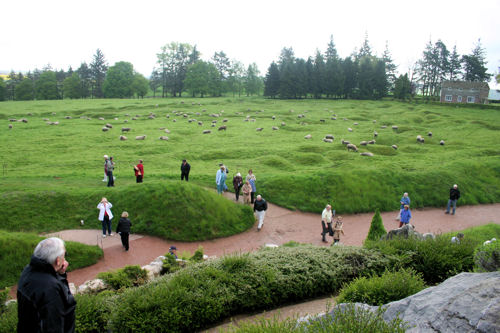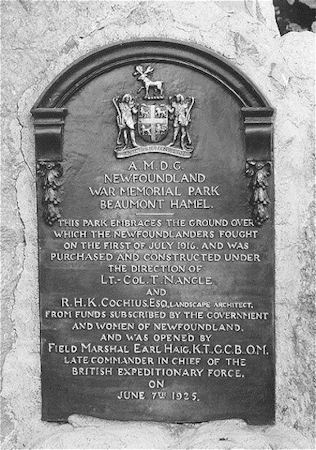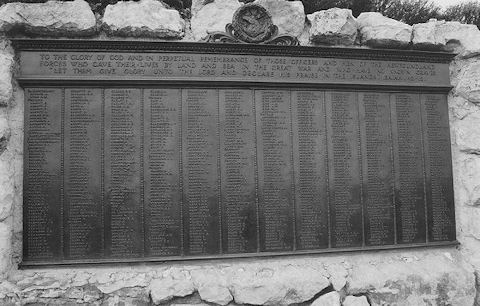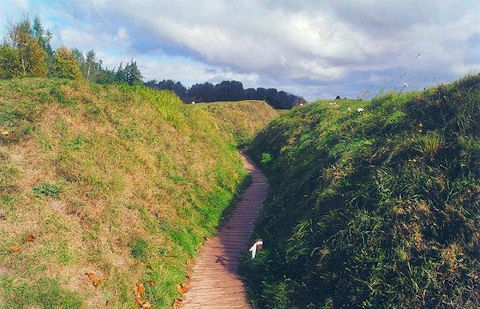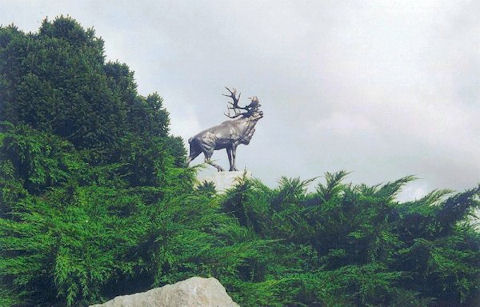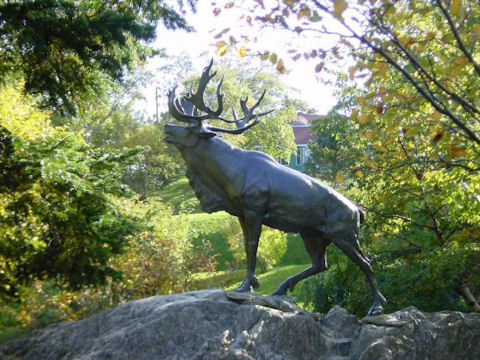A Tribute to the Sacrifice of the Newfoundlanders at
Beaumont-Hamel< France:
July 1, 1916
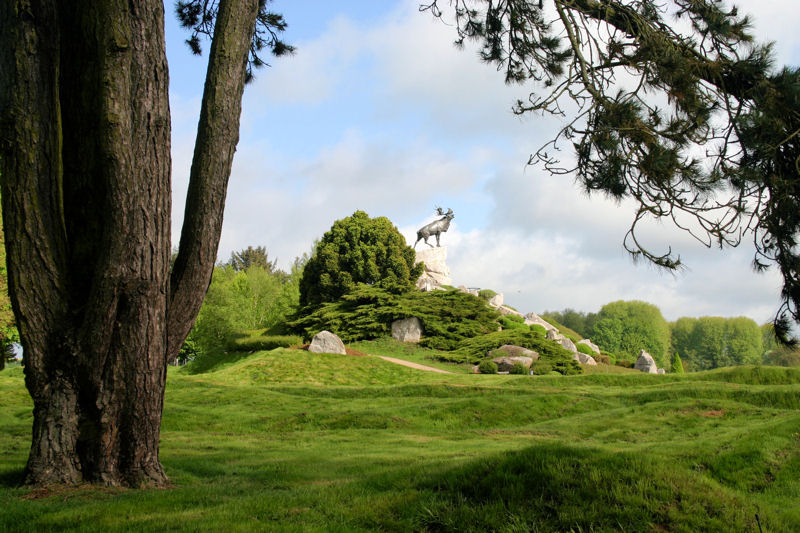
On July 1, 1916, British forces began the bloodiest day of their history. The objective of the day was to smash through the German lines located in the Somme region of France after, what they believed, the artillery had smashed all defences. The Newfoundland regiment (as part of the British army) was assigned the section of the line at Beaumont-Hamel. Although this was the Newfoundlanders first battle in France, they had seen action in Gallipoli and had trained themselves into top form. Unfortunately, training and experience mean little when faced with a storm of machine gun fire and German defences dug deeply into the ground – far from the effects of the artillery’s shrapnel.
Soon after the attack began it was clear that the German machine guns were not silenced and the barbed wire had not been destroyed. The bravery of the Newfoundlanders was as undeniable: their chances for success practically non-existent.
The park at Beaumont-Hamel opened June 7, 1925 and since Newfoundland’s entry into Confederation in 1949 it has been operated by the Canadian Department of Veteran’s Affairs. The park itself is forty acres in size and is located about 35 minutes south of Arras, France and about 10 minutes north of Albert, France. The bronze Caribou Stag is the emblem of the Royal Newfoundland Regiment. The names of those Newfoundlanders that died that day are inscribed at the monument.
Of the 801 Newfoundlanders that left their trenches on July 1, 1916 only 69 returned to answer the roll-call. The dead numbered 255, 386 men were wounded and 91 were recorded missing.
Many thanks to Saskatchewan's Jim Boswell for sharing his poem with us . . .
BEAUMONT HAMEL
copyrighted 1997,
Old soldiers and sailors and airmen march by
Bent but not broken, not nearly as spry
As the day they marched off to give Jerry Hell
At places with names like Beaumont Hamel.They march to the cenotaph wearing berets.
Their skin is all wrinkled. Their hair is all grey.
They wipe away tears and old chests still swell
At mention of names like Beaumont Hamel.They're buried in Burma. They're buried at sea
The lost generation from a proud colony.
We remember the fallen, remember them well.
They died at places like Beaumont Hamel.Forget not their names. They gave their lives.
For us who came later they marched off to die.
Read loudly the names of all those who fell
In places with names like Beaumont Hamel.Brave Newfoundlanders who answered the call
And asked not the reason nor sense to it all.
They came from the outports and cities as well
To die in the mud at Beaumont Hamel.Brother by brothers, fathers by sons
‘Til each tasted death from the enemy's guns
And some met a fate much too gruesome to tell
As they died in the mud at Beaumont Hamel.Mothers and sisters and fathers and wives
And children all mourned for those who had died
In the carnage of courage, the smoke and the smell
Of the Devil's domain, damned Beaumont Hamel.Copyrighted 1997, James H. Boswell,
Site 407, Box 17, RR#4, Saskatoon, Sk.,
S7K-3J7, 1-306-933-2954. All rights reserved.
for further reading :
Memoirs of a Blue Puttee – The Newfoundland Regiment in World War One
By A.J. Stacey & Jean Edwards StaceyPublished by:
DRC Publishers
3 Parliament Street, St. John’s, Newfoundland A1A 2Y6Phone (709) 726-0960
staceypj@avint.net
Isbn # 0-968420
